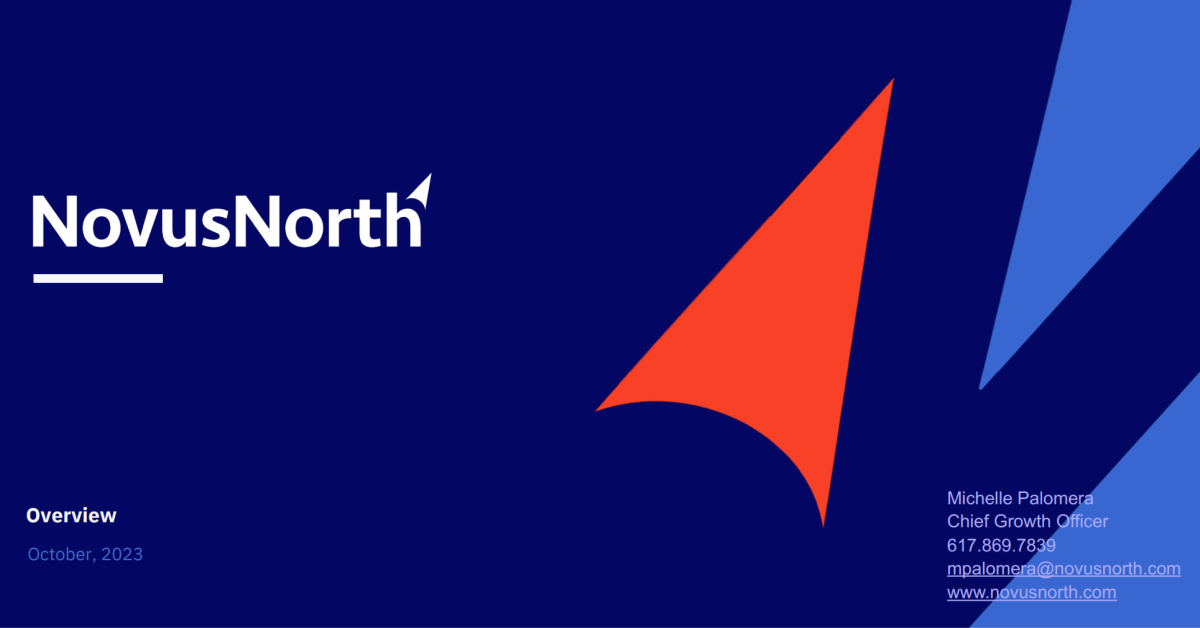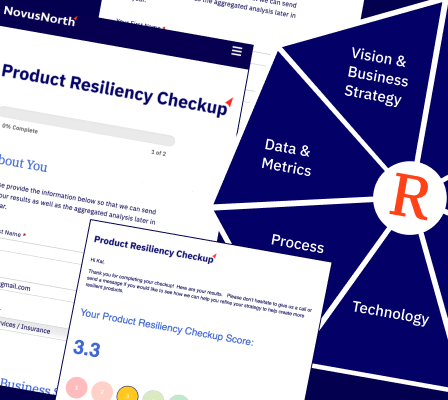In response to the growing emphasis on delivering exceptional customer experience and the increasing scrutiny on the total cost of ownership of technology, numerous B2B financial institutions are opting to consolidate multiple digital products into a unified platform. The accumulation of independent digital products typically stems from years of singular focus on building and launching new products, often accompanied by products obtained through business acquisitions. As a result, customers often find themselves working across multiple products that exhibit different appearances and operate in distinct ways. This creates friction in the sales process as companies struggle to promote products that appear divergent and lack integration. It also complicates the onboarding process for clients interested in multiple products and exposes providers to competition from digital products that offer a modern customer experience that better aligns with evolving customer workflow and data requirements. In many cases, the multitude of products reflects the underlying organizational structure rather than being designed around how customers use them together. Some organizations consolidate to create a more competitive look and feel, while others aim to update their legacy tech stack.
Examining Your Strategy: What Platform Model Should We Use?
When formulating a strategy, organizations should clearly define the outcomes they aim to achieve. For some, the goal may be to quickly bring products closer together and modernize the look and feel within a short time frame. Others may focus on replatforming the technical architecture to a more modern stack, reducing implementation costs, and accelerating time to market. Some organizations seek to fundamentally transform disparate products to align with the natural way customers perform their work, thereby providing incremental value to users. With these diverse objectives, firms must consider and make tradeoffs across multiple dimensions such as customer experience, business impact, time to market, investment, and organizational impact. While there are various modernization models that organizations can adopt, they generally fall into three distinct patterns:

Hub & Spoke
In digital platform consolidation, one of the simplest models for bringing disparate products together is the hub & spoke model. In this model, only the very top of each product is integrated, typically with a dashboard or launchpad type of view. From here users can launch individual products, sometimes opening up specific views in the product that relate to the data on the dashboard. Each of the individual products is a discrete technical application with limited to no functional linkages to/from other applications.
This is often the quickest way to bring products together as most/all of the original products can be leveraged with some new elements being built for the dashboard. This preserves prior investment in the products and speeds time to market. In some cases, this fits user needs quite well, while in other cases, it only solves things like single point of access to the products and ends up being only marginally better than single sign on. This approach can be effective if user groups, or user flows don’t cut across the constituent products and those products have decent user interfaces and technology stack.
CASE
One example of this model is Brown Brothers Harriman’s Infuse platform, a client portal that provides clients access to tools, applications, reports, and notifications critical to running their business. At the core of Infuse is a dashboard populated with widgets providing summary data across a range of services and the ability to then drill down into various applications and data. While taking advantage of the speed to market advantages of a hub & spoke model, BBH created a comprehensive design system so that individual applications look and feel like they’re part of a cohesive platform, enhancing the customer experience and adding huge value to the sales process.

Modular
Of the three models, the most frequently used approach for bringing disparate products together is the modular approach. In this model, features from contributing products are modularized into UI containers of various sizes that contain summary data, lists/grids of data, or detailed views. These containers from the different apps can then be composed into the new platform. Interaction across modules from different platforms is often based on context (what data is selected), but little else.
This is often seen as a technically advantageous approach as it enables slightly deeper integration of the UI’s than the hub & spoke approach, but the modules can easily be created by federated design and development teams with a design system and a limited number of architectural standards. To the user, this can appear much more integrated than the disparate products were in the past. However, if individual tasks tend to run across the features from more than one of the contributing products, it can still feel like a cumbersome experience. When choosing this model, it’s critical to understand this relationship of tasks to functionality to understand if this is appropriate for your users. When tasks tend to cut across products, this model may not fully solve user issues.
CASE
State Street’s GlobalLink platform brings together multiple FX and Cash products into a single application, deployed as a series of modules that interoperate and work as a seamless whole. This strategy combines elements of multiple applications together as modules that can communicate changes with each other and react, enabling them to behave like a single, integrated platform.

Deeply Integrated
The third and final major model in digital platform consolidation is the integrated approach. In this model, the focus is primarily on the user and not on the original form of the digital products. By understanding the users’ needs and context the user experience can be designed around how they think and the tasks they need to perform.
Depending on the structure of the contributing products and alignment to the users’ tasks, this approach can be the heaviest lift, requiring more work to create the new user experience and and resulting in a lower amount of reuse of the original products. At the same time, this model can provide the best results from a user point of view. In this focus, the user value is typically higher and can result in a superior competitive position for the new digital platform.
In Summary
When choosing how deeply to integrate digital products in a B2B financial services platform consolidation, one consideration is how aligned customer tasks are to the individual digital products being integrated. If individual customer tasks primarily sit within a specific existing product, a hub & spoke approach that launches the product from a dashboard may be sufficient. If the customer task naturally utilizes multiple existing products, then deeper integration of the interfaces may be required to work for the user.
About The Author

Dave Cowing
Chief Executive Officer and Co-Founder of NovusNorth
NovusNorth is an outcome-oriented experience consultancy that drives business results by creating compelling experiences for customers and employees in the fintech and financial services industry. Dave has 30 years of experience helping companies ranging from Fortune 500 market leaders to disruptive startups with new ideas.
In response to the growing emphasis on delivering exceptional customer experience and the increasing scrutiny on the total cost of ownership of technology, numerous B2B financial institutions are opting to consolidate multiple digital products into a unified platform. The accumulation of independent digital products typically stems from years of singular focus on building and launching new products, often accompanied by products obtained through business acquisitions. As a result, customers often find themselves working across multiple products that exhibit different appearances and operate in distinct ways. This creates friction in the sales process as companies struggle to promote products that appear divergent and lack integration. It also complicates the onboarding process for clients interested in multiple products and exposes providers to competition from digital products that offer a modern customer experience that better aligns with evolving customer workflow and data requirements. In many cases, the multitude of products reflects the underlying organizational structure rather than being designed around how customers use them together. Some organizations consolidate to create a more competitive look and feel, while others aim to update their legacy tech stack.
Examining Your Strategy: What Platform Model Should We Use?
When formulating a strategy, organizations should clearly define the outcomes they aim to achieve. For some, the goal may be to quickly bring products closer together and modernize the look and feel within a short time frame. Others may focus on replatforming the technical architecture to a more modern stack, reducing implementation costs, and accelerating time to market. Some organizations seek to fundamentally transform disparate products to align with the natural way customers perform their work, thereby providing incremental value to users. With these diverse objectives, firms must consider and make tradeoffs across multiple dimensions such as customer experience, business impact, time to market, investment, and organizational impact. While there are various modernization models that organizations can adopt, they generally fall into three distinct patterns:

Hub & Spoke
In digital platform consolidation, one of the simplest models for bringing disparate products together is the hub & spoke model. In this model, only the very top of each product is integrated, typically with a dashboard or launchpad type of view. From here users can launch individual products, sometimes opening up specific views in the product that relate to the data on the dashboard. Each of the individual products is a discrete technical application with limited to no functional linkages to/from other applications.
This is often the quickest way to bring products together as most/all of the original products can be leveraged with some new elements being built for the dashboard. This preserves prior investment in the products and speeds time to market. In some cases, this fits user needs quite well, while in other cases, it only solves things like single point of access to the products and ends up being only marginally better than single sign on. This approach can be effective if user groups, or user flows don’t cut across the constituent products and those products have decent user interfaces and technology stack.
CASE
One example of this model is Brown Brothers Harriman’s Infuse platform, a client portal that provides clients access to tools, applications, reports, and notifications critical to running their business. At the core of Infuse is a dashboard populated with widgets providing summary data across a range of services and the ability to then drill down into various applications and data. While taking advantage of the speed to market advantages of a hub & spoke model, BBH created a comprehensive design system so that individual applications look and feel like they’re part of a cohesive platform, enhancing the customer experience and adding huge value to the sales process.

Modular
Of the three models, the most frequently used approach for bringing disparate products together is the modular approach. In this model, features from contributing products are modularized into UI containers of various sizes that contain summary data, lists/grids of data, or detailed views. These containers from the different apps can then be composed into the new platform. Interaction across modules from different platforms is often based on context (what data is selected), but little else.
This is often seen as a technically advantageous approach as it enables slightly deeper integration of the UI’s than the hub & spoke approach, but the modules can easily be created by federated design and development teams with a design system and a limited number of architectural standards. To the user, this can appear much more integrated than the disparate products were in the past. However, if individual tasks tend to run across the features from more than one of the contributing products, it can still feel like a cumbersome experience. When choosing this model, it’s critical to understand this relationship of tasks to functionality to understand if this is appropriate for your users. When tasks tend to cut across products, this model may not fully solve user issues.
CASE
State Street’s GlobalLink platform brings together multiple FX and Cash products into a single application, deployed as a series of modules that interoperate and work as a seamless whole. This strategy combines elements of multiple applications together as modules that can communicate changes with each other and react, enabling them to behave like a single, integrated platform.

Deeply Integrated
The third and final major model in digital platform consolidation is the integrated approach. In this model, the focus is primarily on the user and not on the original form of the digital products. By understanding the users’ needs and context the user experience can be designed around how they think and the tasks they need to perform.
Depending on the structure of the contributing products and alignment to the users’ tasks, this approach can be the heaviest lift, requiring more work to create the new user experience and and resulting in a lower amount of reuse of the original products. At the same time, this model can provide the best results from a user point of view. In this focus, the user value is typically higher and can result in a superior competitive position for the new digital platform.
In Summary
When choosing how deeply to integrate digital products in a B2B financial services platform consolidation, one consideration is how aligned customer tasks are to the individual digital products being integrated. If individual customer tasks primarily sit within a specific existing product, a hub & spoke approach that launches the product from a dashboard may be sufficient. If the customer task naturally utilizes multiple existing products, then deeper integration of the interfaces may be required to work for the user.
About The Author

Dave Cowing
Chief Executive Officer and Co-Founder of NovusNorth
NovusNorth is an outcome-oriented experience consultancy that drives business results by creating compelling experiences for customers and employees in the fintech and financial services industry. Dave has 30 years of experience helping companies ranging from Fortune 500 market leaders to disruptive startups with new ideas.
Let’s Talk!
Trying to find your new north? Get in touch to find out how we can work together to achieve the business outcomes you need.
Our Latest Insights
Founder and CEO, Rich Cancro, shares how AdvisorEngine applies their guiding principles of Personal, Scientific and Beautiful to create a world-class wealth management platform for Registered Independent Advisors.
By NovusNorth
A high-level over view of our financial services experience and capabilities. We deliver digital experiences. World class experiences that drive business outcomes for the financial services industry.
By NovusNorth
We will be showcasing our team’s experience in designing and building platforms spanning the value chain in structured finance and capital markets from onboarding and account opening to funding, securitization, trading, portfolio management, administration, servicing and trust/custody.
By NovusNorth





